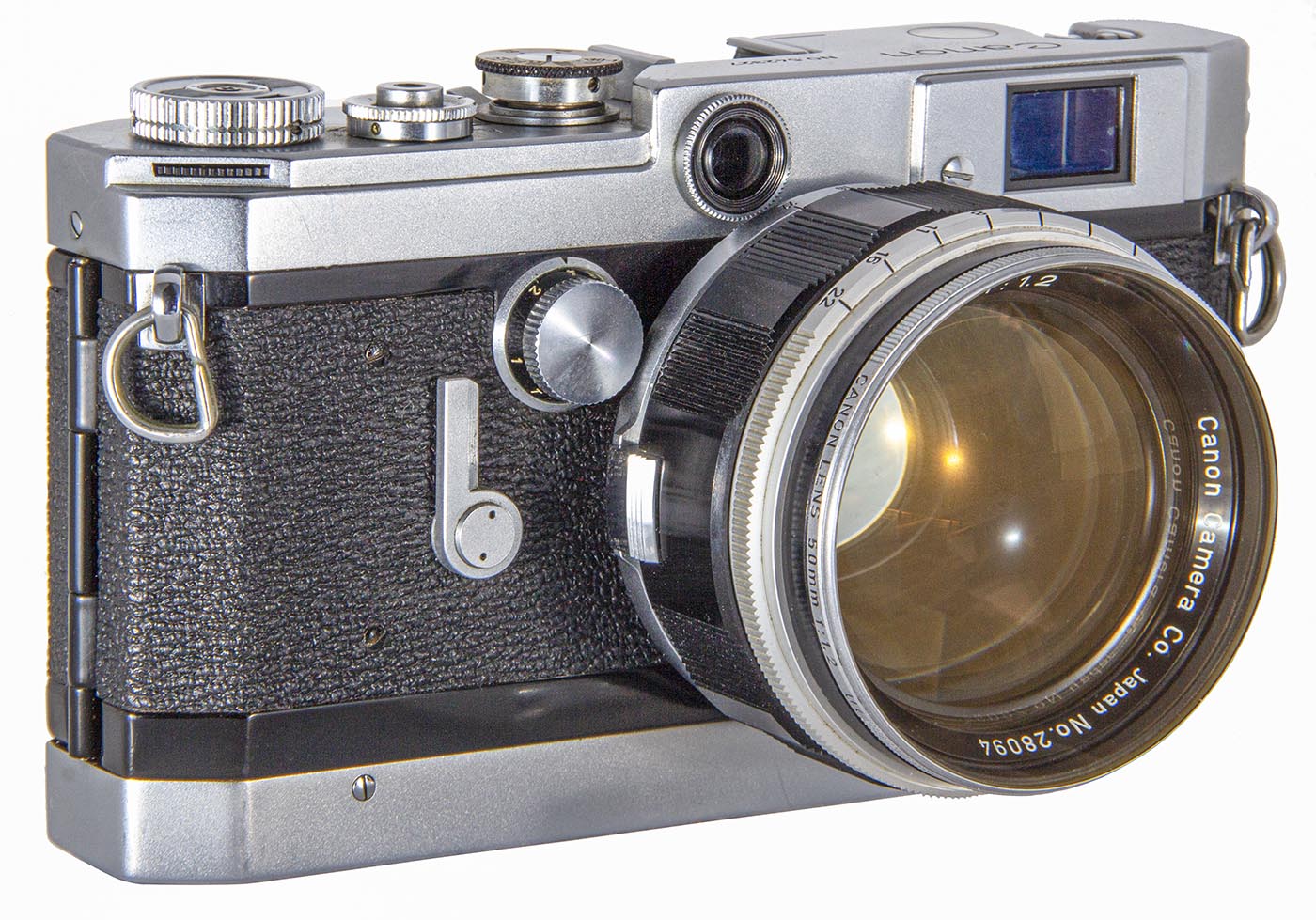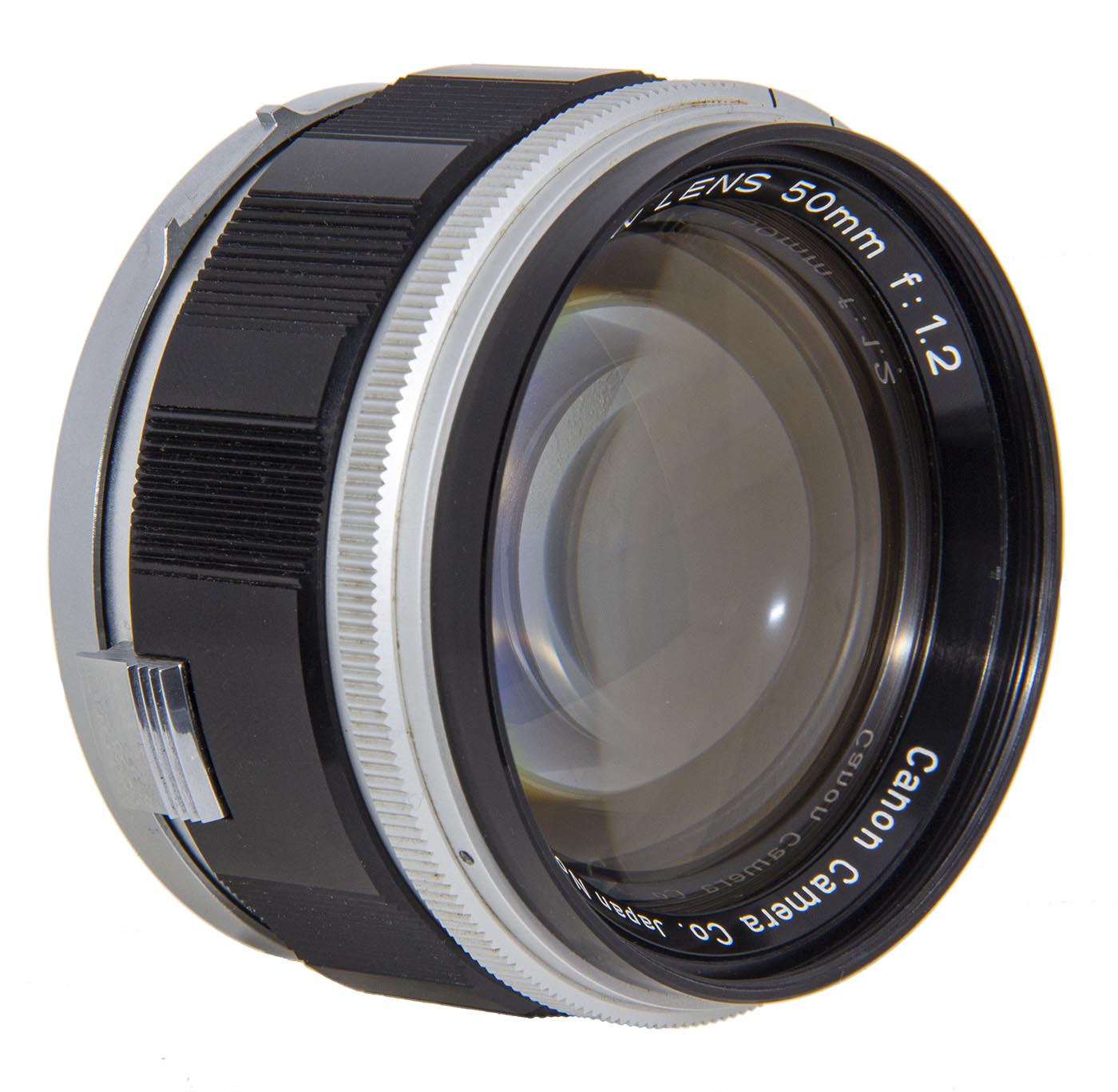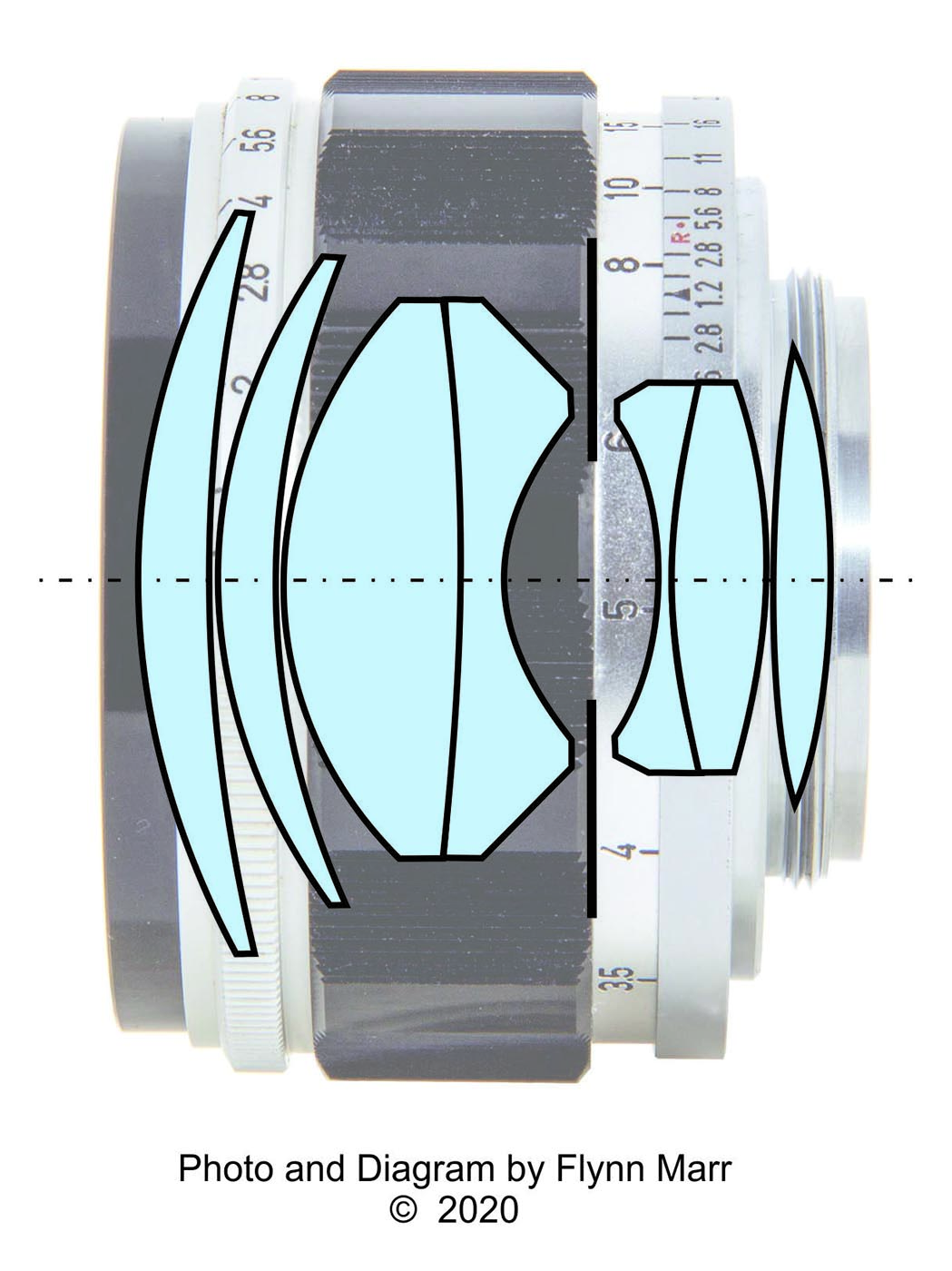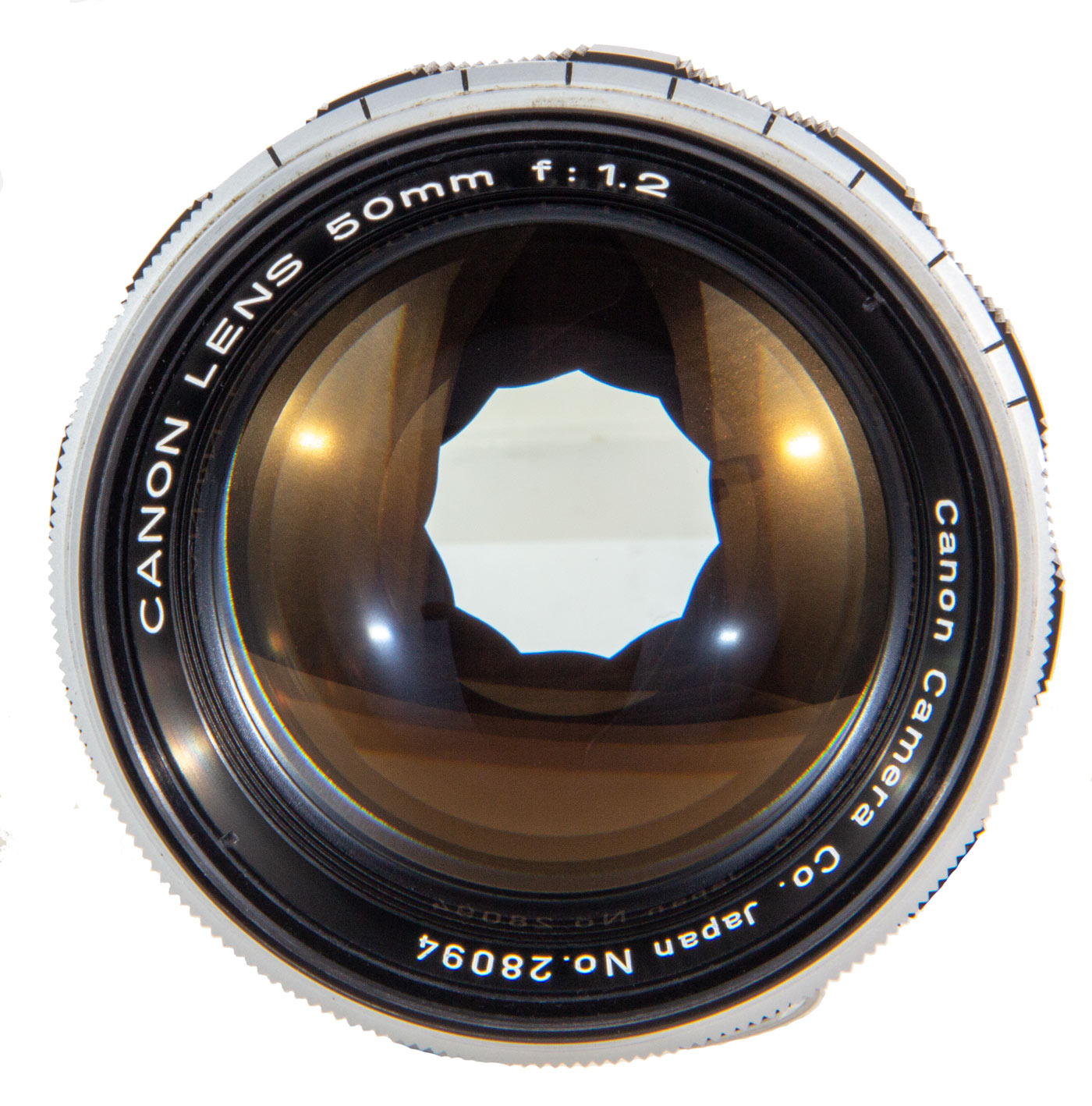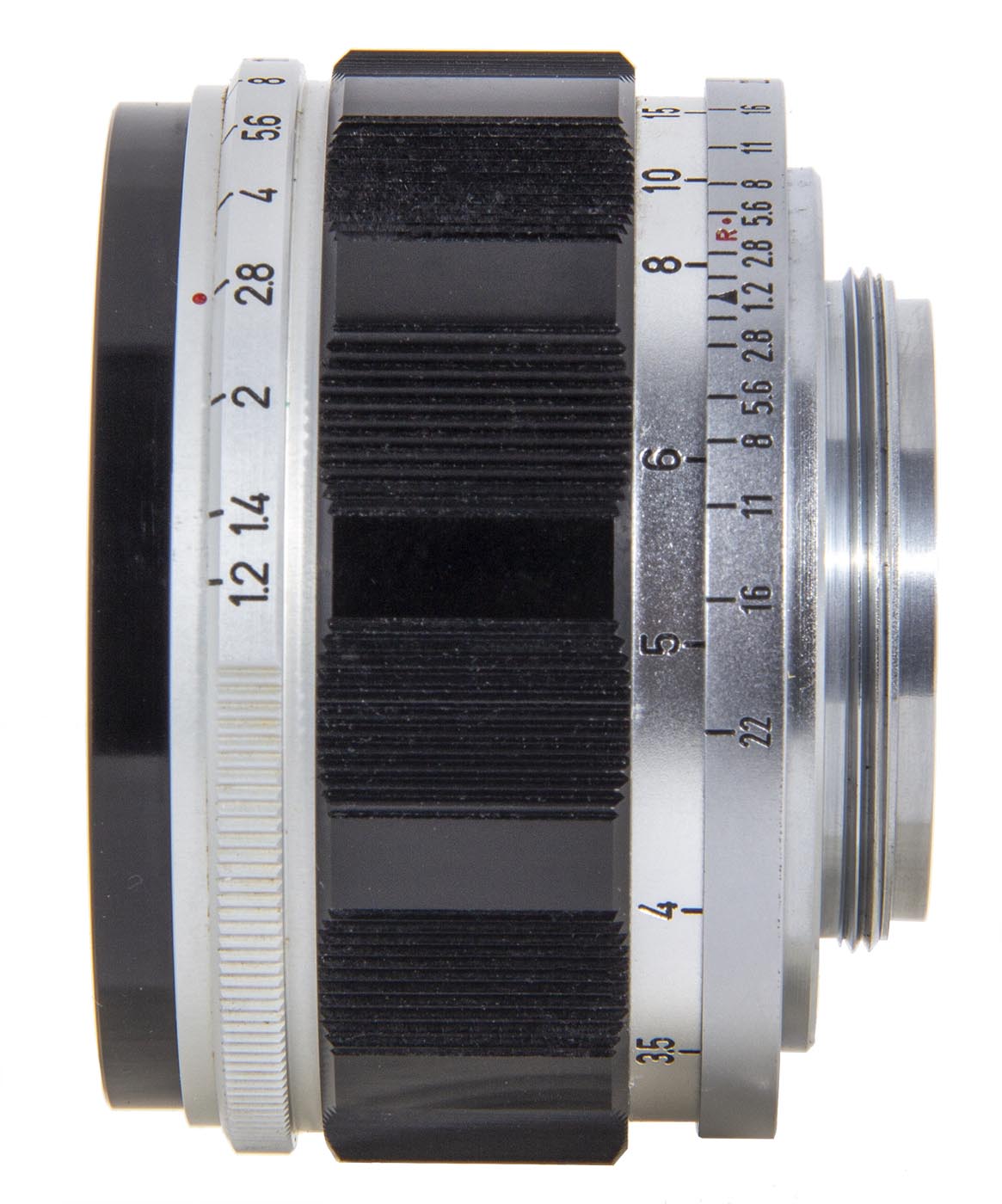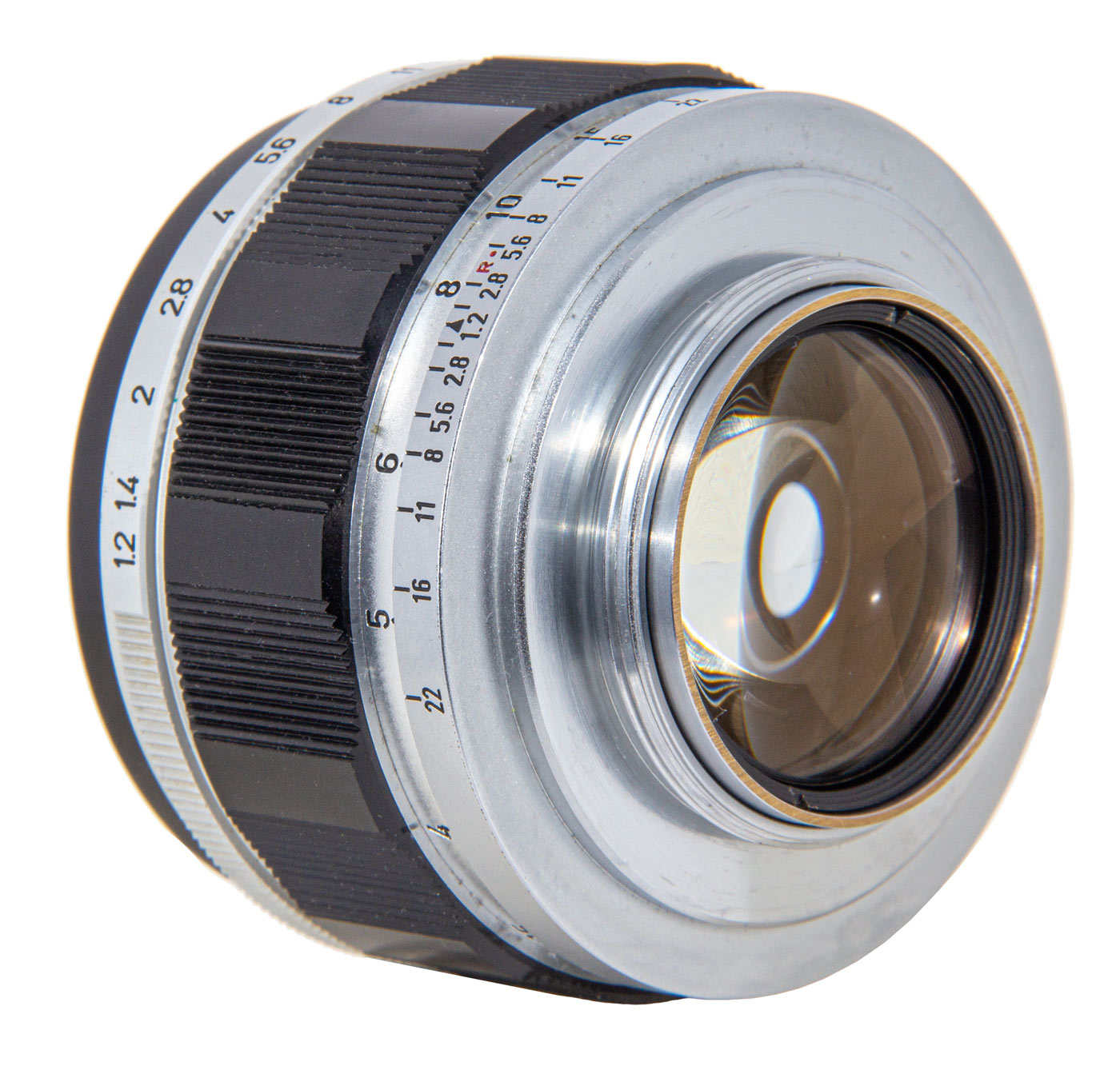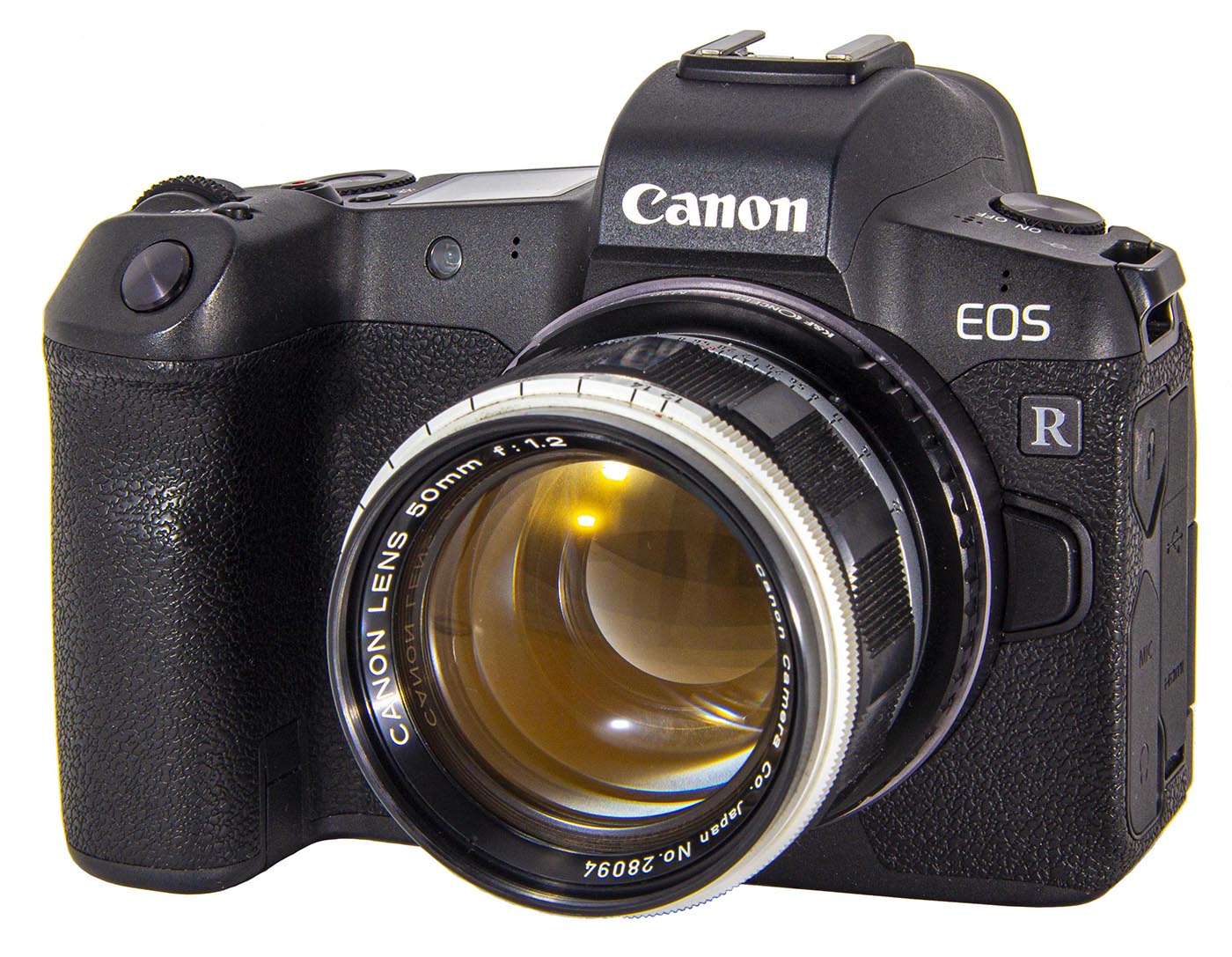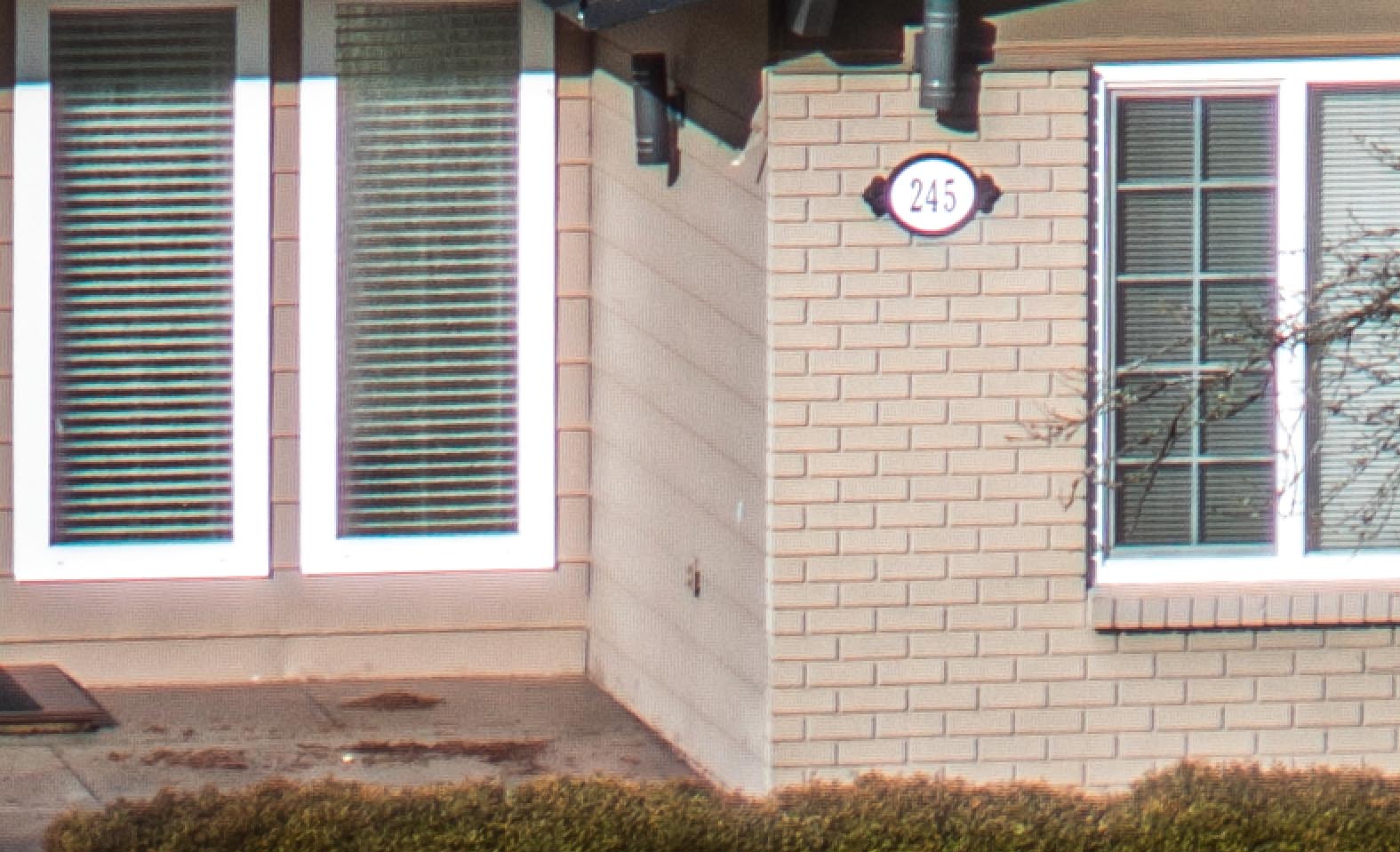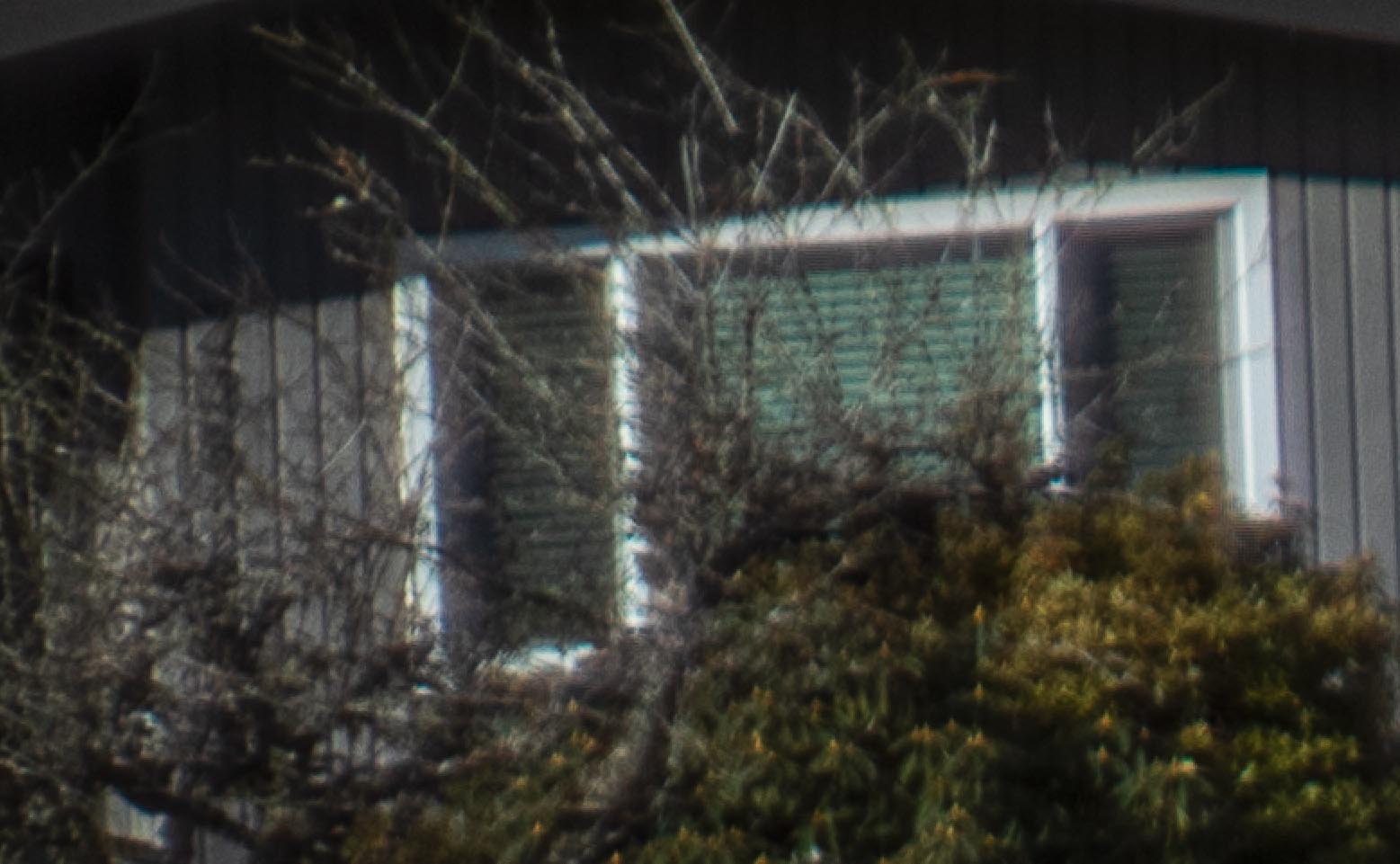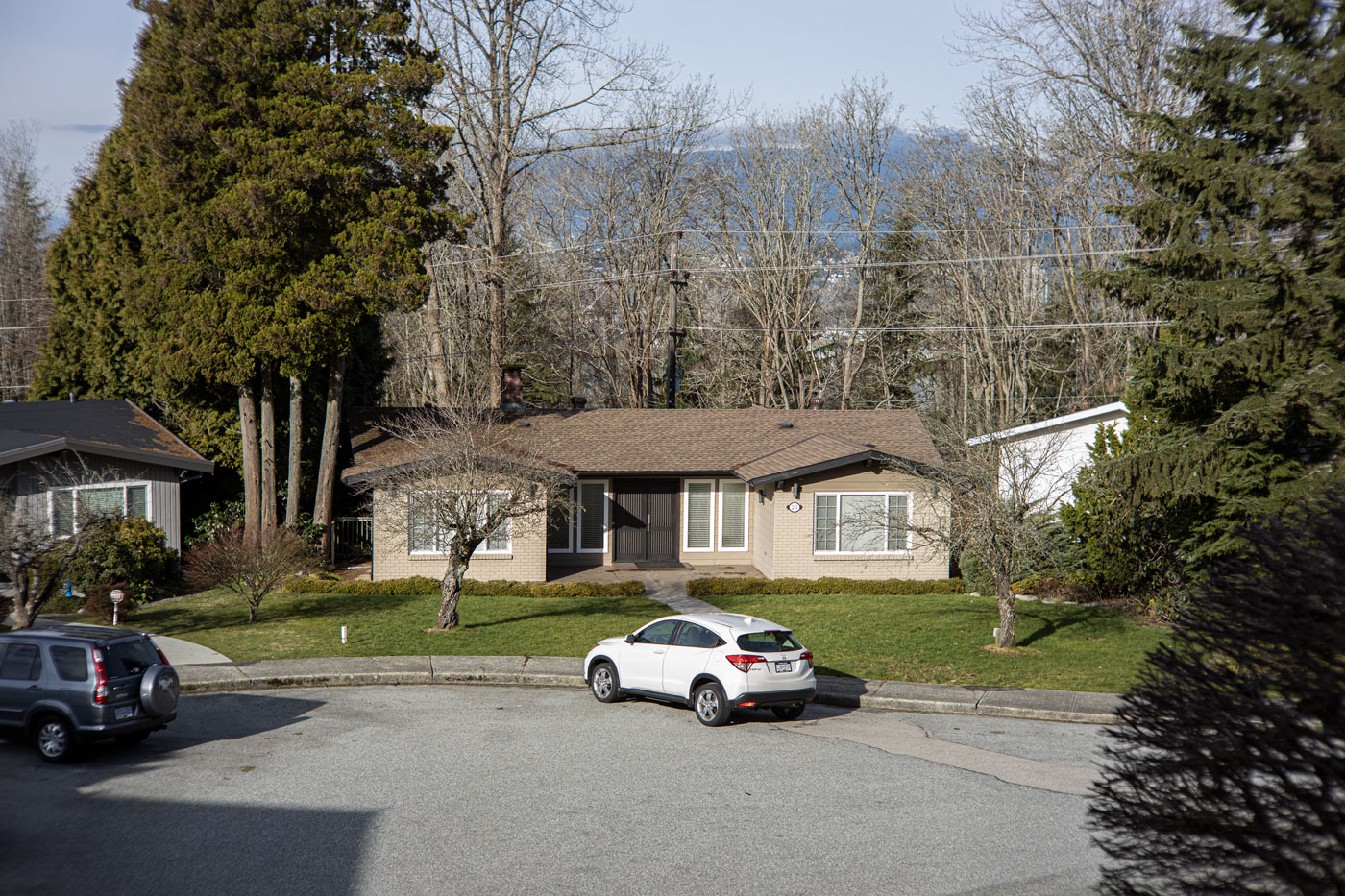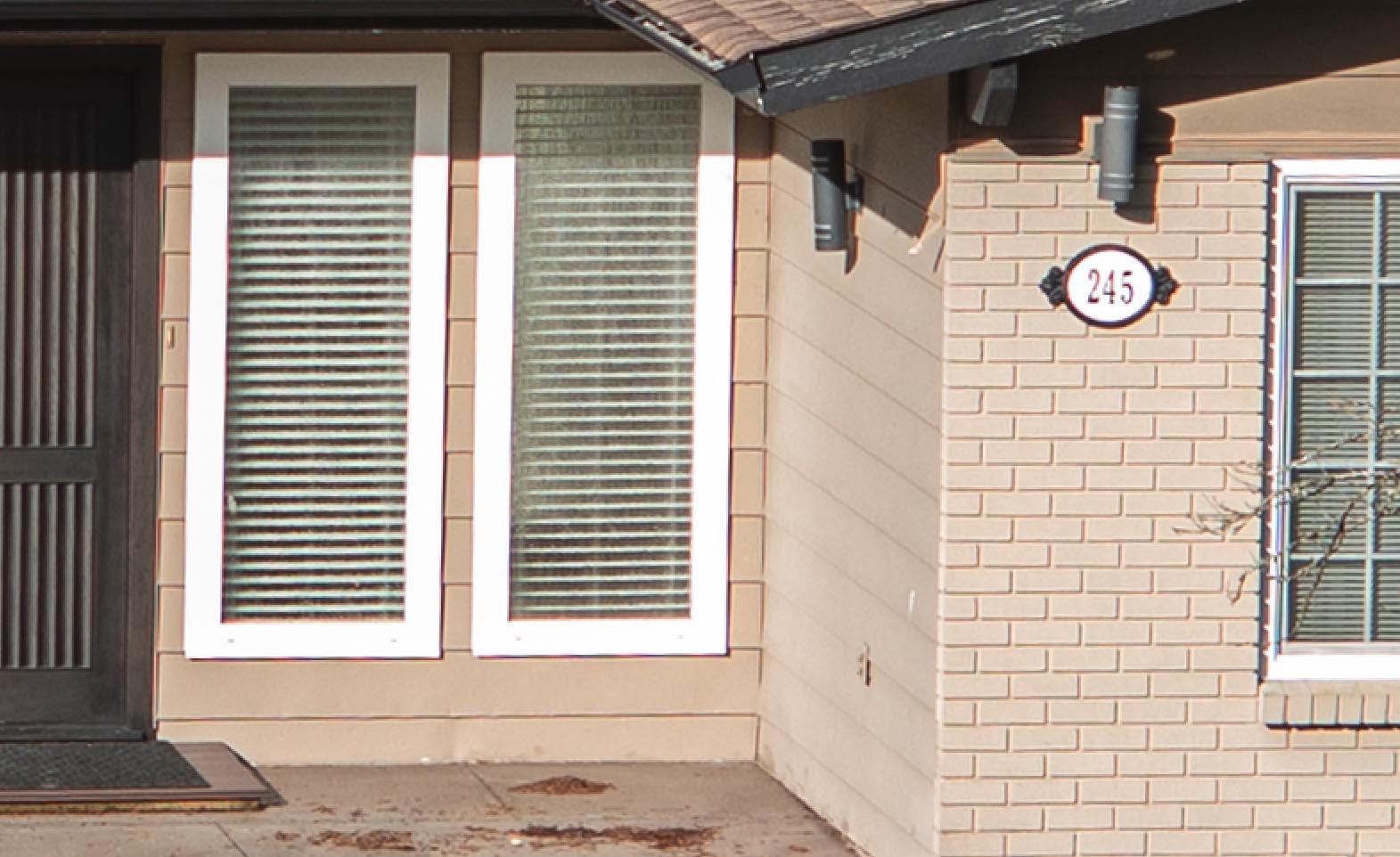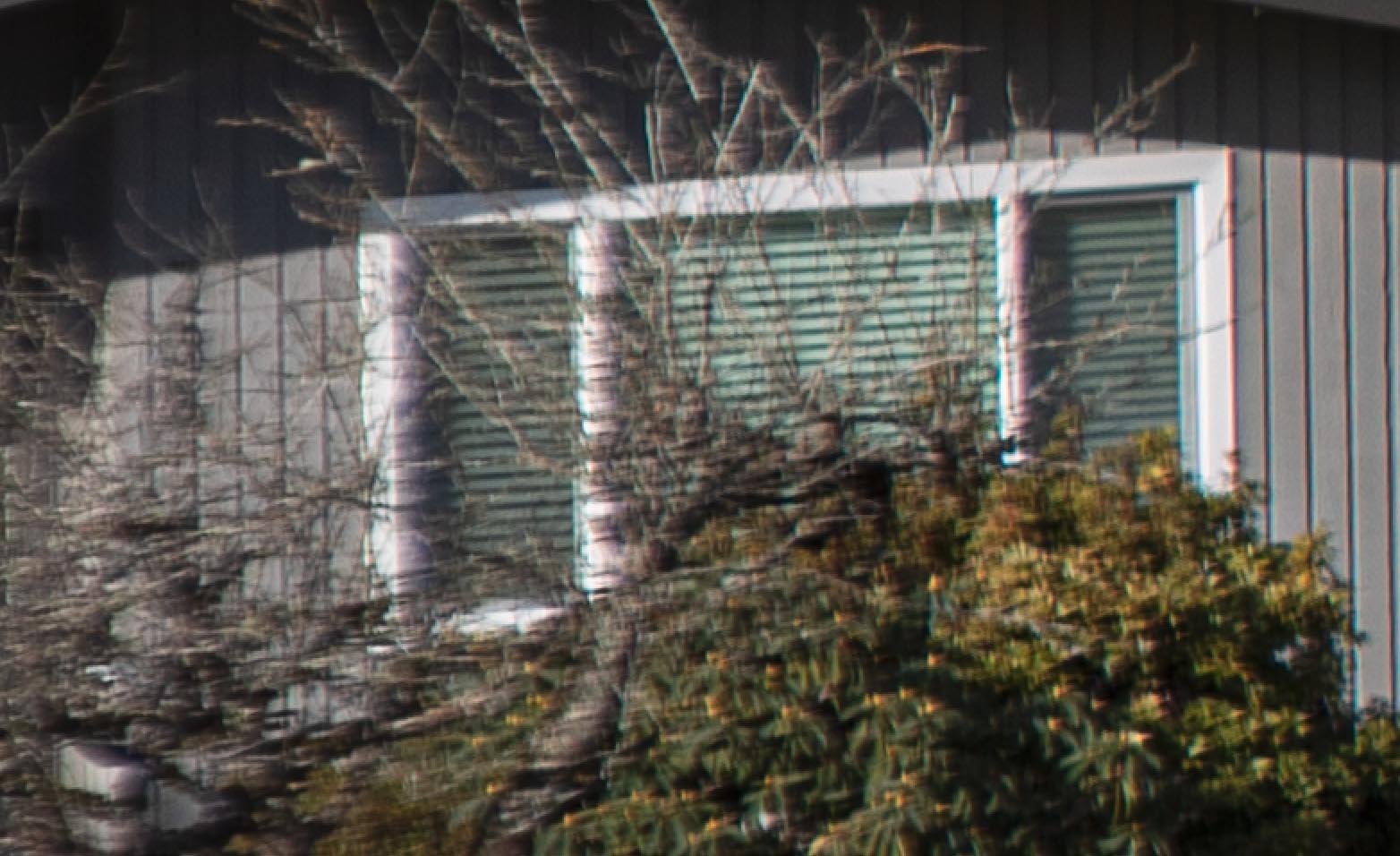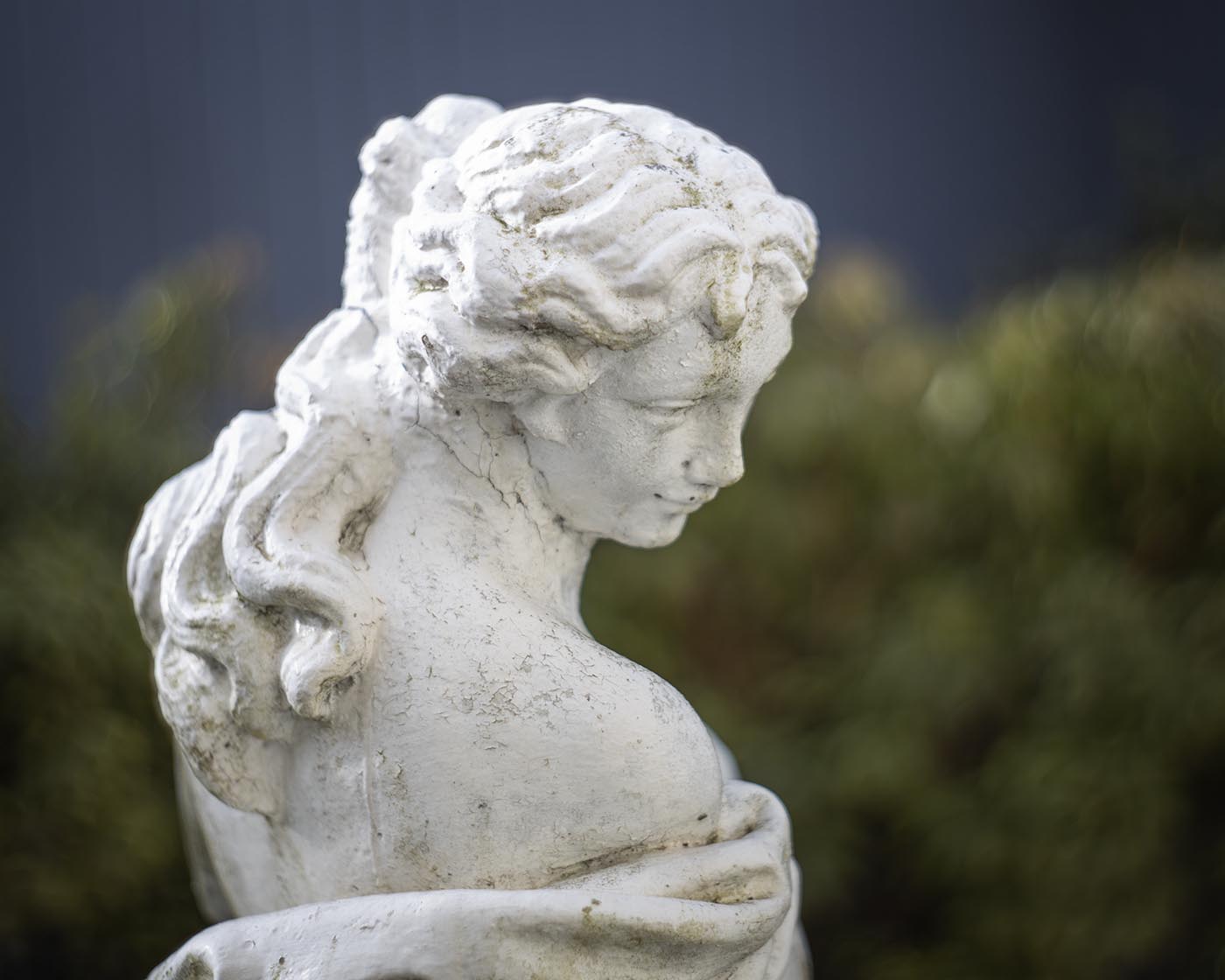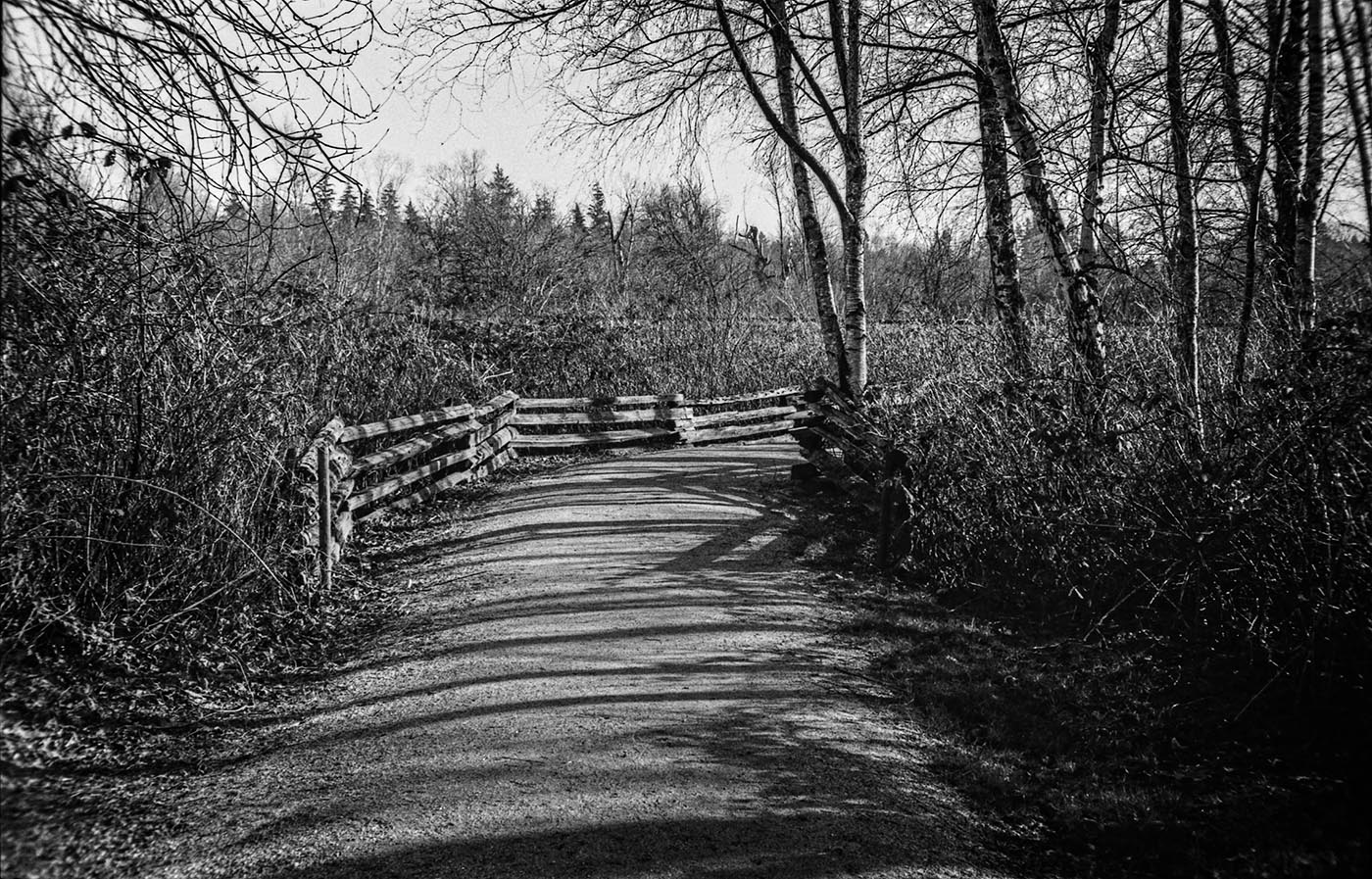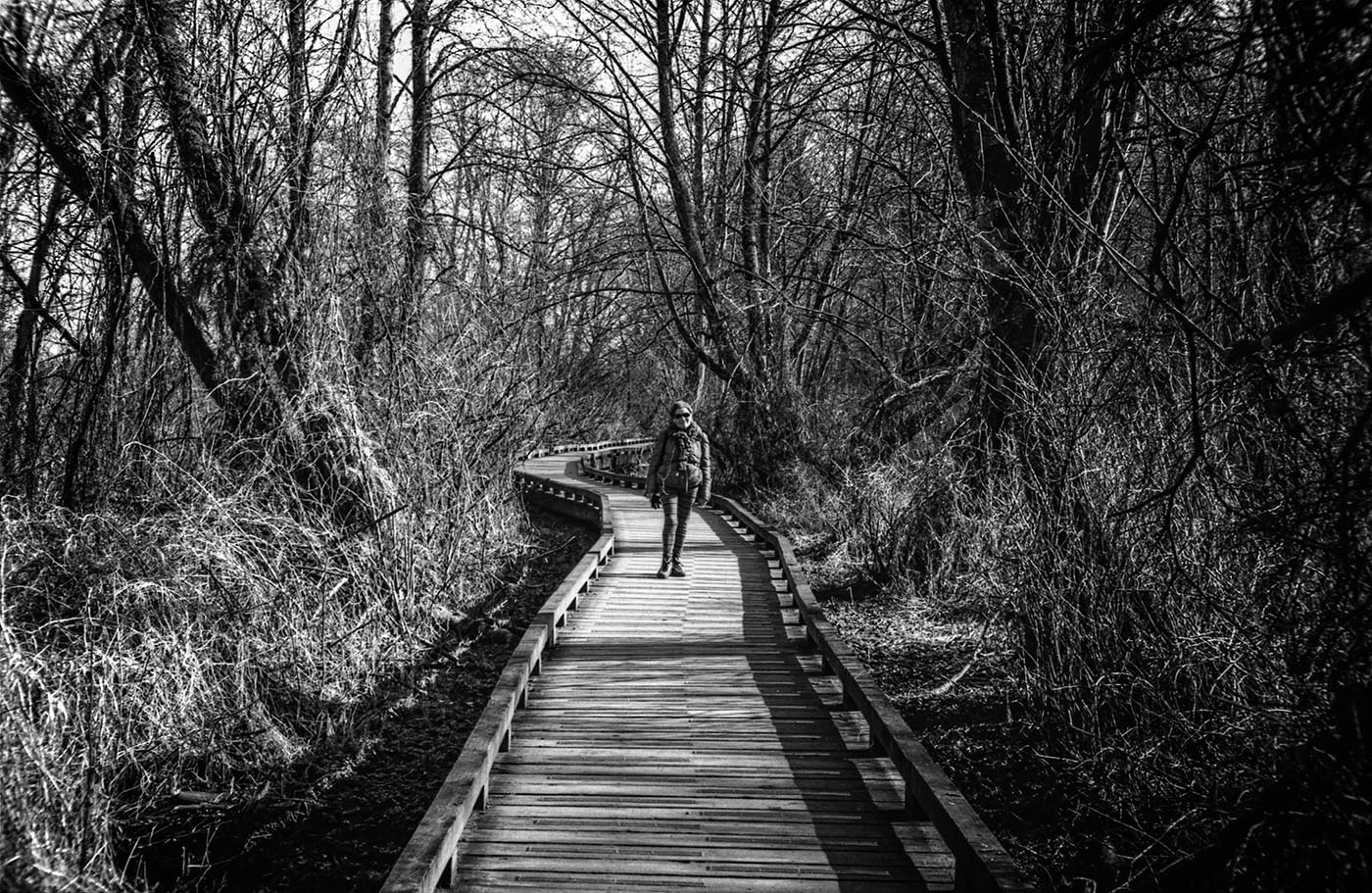My Canon VT delux with the lens that Canon promoted as the “Standard Lens” for the VT and VT delux: the Canon S 50mm f/1.2.
Canon Lens S 50mm f/1.2
In the beginning lenses were slow and film was slower. Long exposures and tripods were the norm for the first fifty years. However, when Canon began to manufacture lenses around 1946 speeds of f/3.5 were common and the designs were well understood. By November of 1952 Canon came out with their fastest lens to date, a 50mm Serenar of f/1.5 aperture.
But to design faster lenses encountered a whole series of complex problems. One was the quality of the glass. Optical glass is a specialized kind of product that
must to be extremely clear and uniform, not to mention that it must have no bubbles embedded in it. And as lenses become faster the size of the optical elements increases. This means that larger and larger pieces of perfect glass must be created, ground and polished. But not only that, the larger the lenses become the angles at which light encounters the glass becomes shallower and the more difficult it becomes to control the light as it passes through the lenses.
Canon, in a very competitive market, continually worked on their lenses to create the best lenses that the technology of the time could produce. In September of 1956 they introduced the first of their f/1.2 lenses. Over the years, these were the fastest of Canon’s lenses with the sole exception of their f/0.95 “Dream Lens” and were available in their lineup for the “S”, “R”, and “FD” mounts. Although not included in this discussion, the f/1.2 continued into the EF and RF mounts.
f/1.2 lenses (50 to 58mm)
The following table is taken from data on the Canon Museum website.
| Name | Intro Date | Groups | Elements | Notes |
| S 50mm f/1.2 | Sept 1956 | 5 | 7 | 55mm Filter |
| R 58mm f/1.2 | Feb 1962 | 5 | 7 | 58mm Filter |
| FL 58mm f/1.2 (I) | Mar 1964 | 5 | 7 | 58mm Filter |
| FL 58mm f/1.2 (II) | Mar 1966 | 5 | 7 | 58mm Filter |
| FL 55mm f/1.2 | Jul 1968 | 5 | 7 | 58mm Filter |
| FD 55mm f/1.2 | Mar 1971 | 5 | 7 | 58mm Filter |
| 55mm f/1.2 AL | Mar 1971 | 6 | 8 | 58mm Filter – Aspherical element |
| FD 55mm f/1.2 S.S.C. | Mar 1973 | 5 | 7 | 58mm Filter |
| FD 55mm f/1.2 S.S.C. AL | Mar 1973 | 6 | 8 | 58mm Filter – Aspherical element |
| FD 55mm f/1.2 S.S.C Aspherical | Mar 1975 | 6 | 8 | 58mm Filter – Aspherical element |
| FDn 50mm f/1.2 L | Oct 1980 | 6 | 8 | 52mm Filter |
| Fn 50mm f/1.2 | Dec 1980 | 6 | 7 | 52mm Filter |
| EF 50mm f/1.2 L USM | Jan 2007 | 6 | 8 | 72mm Filter |
| RF 50mm f/1.2 L USM | Oct 2018 | 9 | 15 | 77mm Filter |
S 50mm f/1.2
When you put this lens on your rangefinder it looks impressive. This is a big piece of glass. It was introduced as the standard lens for the Canon Model VT and it looks wonderful. In fact, however, its performance is not quite up to its appearance. But more of that later.
Like all of the Canon S series, this is a well built lens. No plastic used here! It is all metal and glass construction and consequently it is heavy for its size.
The Canon Museum says there is one f/1.2 but Kitchingman details 2 versions but they differ cosmetically only.
The basic data in table form goes like this:
| Collection No.: |
L-208 |
| Serial No.: | 28094 |
| Release Date: | September 1956 |
| Groups of Elements: | 5 |
| Elements: | 7 |
| Diaphragm Blades: | 11 |
| Minimum Aperture: | 22 |
| Closest Focus: | 1 meter |
| Filter Ring: | 55mm |
| Weight: | 322 grams |
The mount is the the Leica Thread mount, or M39, and so you often find these lenses on other cameras such as the Leica M3. Some were even modified to fit the Leica M3 bayonet mount when it was introduced.
Internally this lens is a modified double gaussian design. I was able to find a reasonably clean copy of one which is shown in all of the photographs on this page. Below I take some pictures with it to have a look at its quality.
My favorite testbed is my Canon R which is perfect. Its short flange distance allows all Canon lenses to be mounted on it, with appropriate adapters.
How does it Perform?
Testing these old lenses is fun. My wife shakes her head and figures I am certifiably nuts but, for me, it is enjoyable. This is a hobby after all and entertainment is the ultimate goal. And I learn more about photography along the way.
I have noticed along the way that I am becoming more sensitive to light, exposure and aperture settings because you must engage directly with these if you want to use the old technology. And that can only help my general photography.
My Canon R is the perfect camera for this testing process. The “R” has a flange distance shorter than any other Canon lenses of any age and so all Canon lens can be used on this camera, with suitable adapters, without adding any glass to the light path. So let’s look at the following pictures:
Wide Open at f/1.2
Wide open the lens has a pronounced vignette falling off to the edges and corners. Also notice the white car just below center. It was very bright and you can notice a distinct halo around it.
Going to the center at 200% we see very acceptable sharpness with no discerable color fringing. Distortion is well controlled.
Stopped down to f/8.0
Stopped down to F/8.0 which is 4 stops smaller the image is more even showing little of the vignetting it had wide open.
The center at f/8.0 is crisper and pefectly acceptible. Wide open was sufficiently good there was not much room for improvement.
Shooting with this lens on the Canon R is very pleasant. Wide open the depth of field is so shallow that the focus peaking in the camera body is very snappy and accurate. However, as you can see above, this lens is not the best performer around the edges. There are no bad lenses, only wrong lens. A lens may perform wonderfully for portraits and be awful for landscapes. Each has its strengths. As you will find in these pages, I have used my Brownie Hawkeyes with great success for cetain images. And I have taken the Hawkeye lens alone and put it on my Canon R and it performs very acceptibly in my wife’s garden taking images of flowers.
For instance, look at the image below. This was taken at f/1.2. The face is slightly out of focus but the neck is sharp. Very shallow depth of field. And look at that dreamy bokeh in the background. This is not a landscape lense but for portraits it would be admirable. I have yet to try it in a dark setting such as a night club but it was obviously intended for such a setting. I intend to do just that and see how it performs and when I do I will update this post.
To be fair to this lens, these tests are not fair. We are examining 30 mpx images when this lens was intended to record images on 10 mpx film. Film cannot record the detail that the Canon R is capable of.
To level the playing fiend I took my lens for a walk around Burnaby Lake which is a local park here in Burnaby. I was using a VT delux body (the setup shown at the top of this page) loaded with Ilford Professional Delta 100 which I was shooting at ISO 100. It was a pleasant day I went through all 36 exposures in the one afternoon.
Under these conditions this was a fun lens to use. The day was sunny with a few clouds and I was shooting at f/8.0 to f/11 all the way. Under these conditions, this is a solid lens with some weaknesses that one must adjust for. But then, isn’t that true of every lens?
In some places the ground is so wet that we have to walk on timber pathways. This was mid-February and so the plants are all bare. In another six weeks this same spot will be a profusion of leaves and flowers. The lake itself will be covered in water lilies and baby ducks. That’s my wonderful Susan in the middle of the picture.

